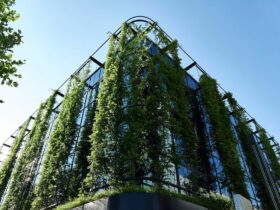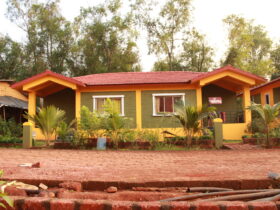Are you looking for ways to make your backyard even cozier? One great way to do this is by planting trees with a wide canopy. Canopy trees are defined as those that have thick foliage coverage, more commonly known as shade trees. Not only will they give your backyard a vacation-like vibe, but they’ll provide you and your home with lots of shade on those hot summer days. Plus, they can give you more privacy and soften neighboring noise too.
Many different varieties of trees are great to plant for shade, but here are five of our favorite trees with a wide canopy for you to consider for your backyard.
- Quaking Aspen
If you want a canopy tree that a wide natural range in North America, look no further than the quaking aspen. Known scientifically as Populus tremuloides, these trees can reach widths of 20 to 30 feet and heights of 25 to 60 feet. They’re part of the willow family and are also sometimes known as golden or trembling aspen. The “quaking” and “trembling” descriptions derive from the leaves on these trees being so lightweight that even the slightest breeze makes them move. Many people plant these trees in their yards if they desire a forest-like ambiance.
Quaking aspens are fast-growing trees, growing more than 24 inches a year. They are common all over the US. Some people opt to plant them close together, as they serve as a natural barrier to noise, view, sunlight, and wind. These trees have large root systems, so if you do want to plant them close together, be sure they are still at least 30 feet away from each other to promote maximum growth.
- Weeping Willow
The weeping willow, known scientifically as Salix babylonica, is one of the most graceful trees you could plant in your backyard, thanks to its whimsical, ground-sweeping branches and leaves that are long and skinny. They can reach widths of 30 to 40 feet and heights of about the same measurements. Weeping willow trees are also fast-growing trees, growing anywhere from three to eight feet each year.
The roots of these trees are quite shallow, meaning that they should be planted away from underground pipes as they can cause extensive damage to drains and/or sewers.
If you want spring to arrive early in your yard, a weeping willow should be your number one choice, as its green foliage and yellow twigs can start appearing as early as February.
- Texas Red Oak
The northern red oak may be more popular, but the Texas red oak should not be overlooked. Scientifically called Quercus buckleyi, this variety of oak will give you a leafy canopy and an abundance of acorns. These acorns will attract local wildlife such as deer, turkeys, and squirrels to your yard. At maturity, these trees have a width of 40 to 65 feet and a height of 50 to 80 feet. They also grow quickly, at a rate of about two feet per year.
Contrary to its name, the foliage is predominately dark green for most of the year. However, in the fall, the tree does become a striking red color.
- American Sycamore
Sometimes referred to as the American plane tree or the buttonwood, the American sycamore tree is quite a large tree so make sure you have room for it in your yard before planting. Scientifically known as Platanus occidentalis, the American sycamore tree can reach widths of 75 to 100 feet and heights of about the same or even more. They are extremely tolerant of different climates, polluted soil, salt, and air pollution, making them a common choice for more urban areas and one of the easier to grow trees.
In their earlier years, they’re extremely quick to grow, at about 10 feet each year. However, this growth does slow down to about two feet a year after the first few years. Its dense branches are home to green leaves. These leaves then turn a golden color during the autumn months.
- Red Maple
If you’re looking for a tree that not only adds a wide canopy to your backyard but also adds a pop of vibrant color to it, the red maple is the tree for you. Known scientifically as the Acer rubrum, these trees have some form of red on them during every season. In the spring, they have red flowers. In the summer, their leafstalks are red. In the fall, the leaves turn a stunning bright red color. In the winter, there are subtle red buds that can still be seen.
They reach a width of about 30 to 50 feet and a height of about 40 to 70 feet at maturity. They’re a moderately fast-growing tree, adding about two to five feet per year. If your yard needs a more medium-sized tree that still provides a great canopy, the red maple is a perfect choice.
The roots of the red maple are shallow, meaning that it’s important to not plant it near sidewalks, driveways, or any underground pipes. However, their roots are adaptable, meaning that these trees can survive in an array of soil types and climates.
Ask an Arborist
The above five trees with a wide canopy are just some of the many shade tree options out there for you to choose from. Before deciding which variety of tree you want in your yard, it’s important to know the conditions of your yard, such as soil type and available space. You don’t want to plant a tree that will grow and completely overtake your yard or one that won’t be able to grow well at all.
If you’re not sure which tree will work best for you, reach out to Mr. Tree. We can guide you in the right direction. We know the importance of canopy trees and why they are an asset to your yard, and we want you to be able to take advantage of that.









